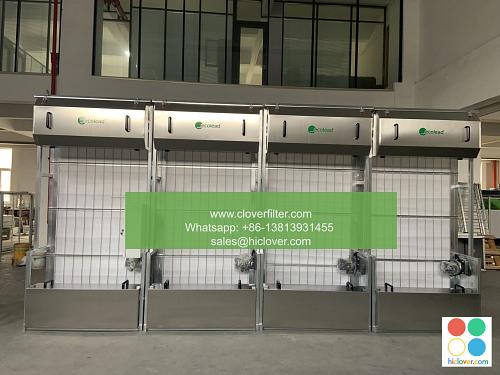Air Filter Technology and Innovation

The air filter industry has witnessed significant advancements in recent years, driven by the increasing demand for clean air and the need to address environmental concerns. Air pollution control and air quality management have become crucial aspects of urban planning and industrial operations. In this article, we will explore the latest developments in air filter technology and their applications in various industries.
Types of Air Filters and Their Applications
There are several types of air filters available, each with its unique characteristics and applications. Some of the most common types include:
* HEPA filters (High Efficiency Particulate Air filters) used in air purification systems and ventilation systems to remove 99.97% of particles as small as 0.3 microns.
* Activated carbon filters used in air cleaning systems and odor control systems to remove gases, chemicals, and VOCs (Volatile Organic Compounds).
* UV air purifiers used in residential air purification and commercial air cleaning to kill bacteria, viruses, and other microorganisms.
Key Innovations in Air Filter Technology
The development of new materials and technologies has led to significant improvements in air filter performance and efficiency. Some of the key innovations include:
* Nanofiber technology used in air filter media to increase filtration efficiency and reduce pressure drop.
* MEMS (Micro-Electro-Mechanical Systems) technology used in air quality sensors to monitor and control air pollution.
* IoT (Internet of Things) enabled air filters used in smart buildings and smart homes to optimize air quality and energy efficiency.
Application Areas of Air Filter Technology
Air filter technology has a wide range of applications across various industries, including:
* Indoor air quality control in commercial buildings, hospitals, and residential homes.
* Air pollution control in industrial processes, power plants, and vehicular emissions.
* Cleanroom technology in pharmaceutical, biotechnology, and semiconductor manufacturing.
* Aerospace and defense applications, such as aircraft cabin air filtration and missile defense systems.
Future Directions and Challenges
The air filter industry is expected to continue its growth and innovation, driven by increasing demands for clean air and environmental sustainability. However, there are several challenges that need to be addressed, including:
* Cost and energy efficiency of air filter systems.
* Filter maintenance and replacement intervals.
* Standardization and regulation of air filter testing and certification.
* Development of new materials and technologies to address emerging air pollution challenges.
In conclusion, air filter technology and innovation have made significant progress in recent years, with various applications across industries. As the demand for clean air and environmental sustainability continues to grow, the air filter industry is expected to play a critical role in addressing these challenges and creating a healthier and more sustainable future. It seems like you forgot to include the prompt. Please go ahead and provide it, and I’ll do my best to assist you!

